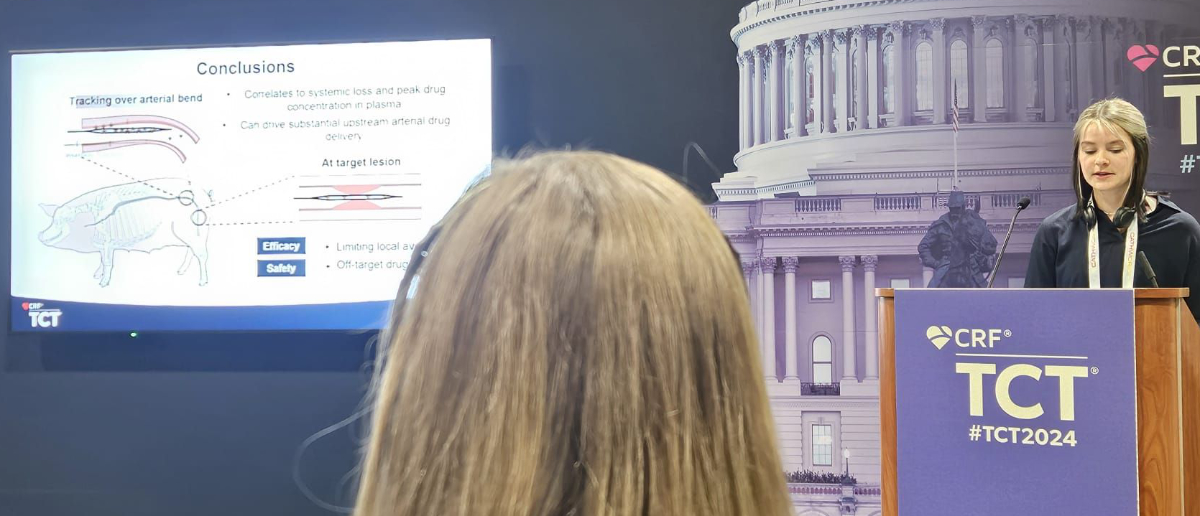
Drug-Loss at Arterial Bends Can Dominate Off-Target Drug Delivery by Paclitaxel-Coated Balloons.
Linnea Tscheuschner, Efstathios Stratakos, Marios Kostakis, Miltiadis Gravanis, Michalis Katsimpoulas, Giancarlo Pennati, Fragiska Sigala, Abraham R. Tzafriri
Background: Numerous benchtop and animal studies have reported tracking loss from paclitaxel-coated balloons (PCBs). Here we define the mechanisms underlying these findings, and their implications for drug distribution into plasma and arterial tissues upstream of PCB inflation sites.
Methods: 5.0x60 mm PCBs (3 µg/mm2, PearlFlow (L2Mtech, Germany)) were advanced under angiography to four naïve and four in-stent restenosis (ISR) porcine superficial femoral arteries (SFA) and inflated for 3 min (1:1.2-1.3 balloon:artery target ratio). Plasma samples were collected pre/post inflation. Animals were sacrificed <1h post intervention, and local, upstream and downstream tissues collected for paclitaxel (PTX) quantification. Computationally driven benchtop tracking and frictional PCB sliding experiments quantified PTX loss and delivery to upstream tissue.
Results: PTX concentrations in plasma peaked post-tracking and declined 29-fold immediately post-inflation. Correspondingly, losses of 30% and 1% of nominal PCB load were measured in-vitro during, respectively, tracking over an angle and during device insertion. PTX concentrations were equally high at ISR and naïve SFA treatment sites (56,984+/-89,453 vs 79,837+/-119,268 ng/g, P>0.99), and ranged from 9-89 ng/g in tissues downstream of these treatment sites, with no statistical difference between naïve and ISR limbs (P>0.99). Interoperative angiography revealed cases of vessel-guide wire interaction in the upstream iliac artery and sampling of tissues at these sites found PTX concentration of 4351+/ 4084 ng/g. In-silico simulations predicted contact pressures of 0.05-0.10 atm during such in vivo frictional PCB-vessel interactions. Benchtop sliding of PCB samples onto ex-vivo porcine artery samples exhibited efficient, pressure independent frictional PTX transfer (124+/- 72 µg at 0.05 atm vs 126+/ 55 µg at 0.1 atm, P>0.99).
Conclusions: PCB interactions at porcine vessel bends were demonstrated to drive premature tracking loss, resulting in peak plasma concentrations well in excess of post inflation values, as well as in upstream tissue delivery that is plausibly explained as arising from efficient friction mediated coating transfer.
Presentation at TCT, October 27-30, 2024, Washington, DC.

